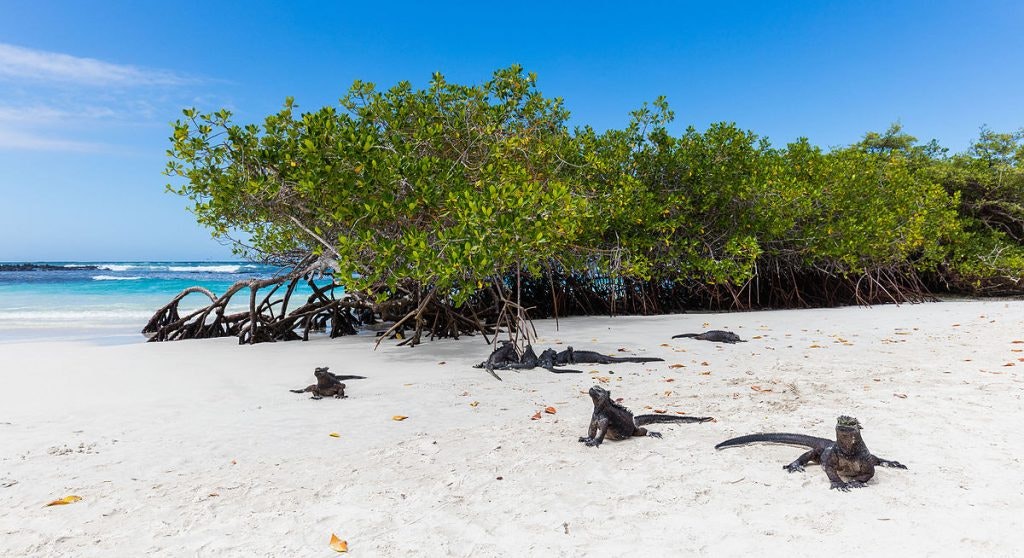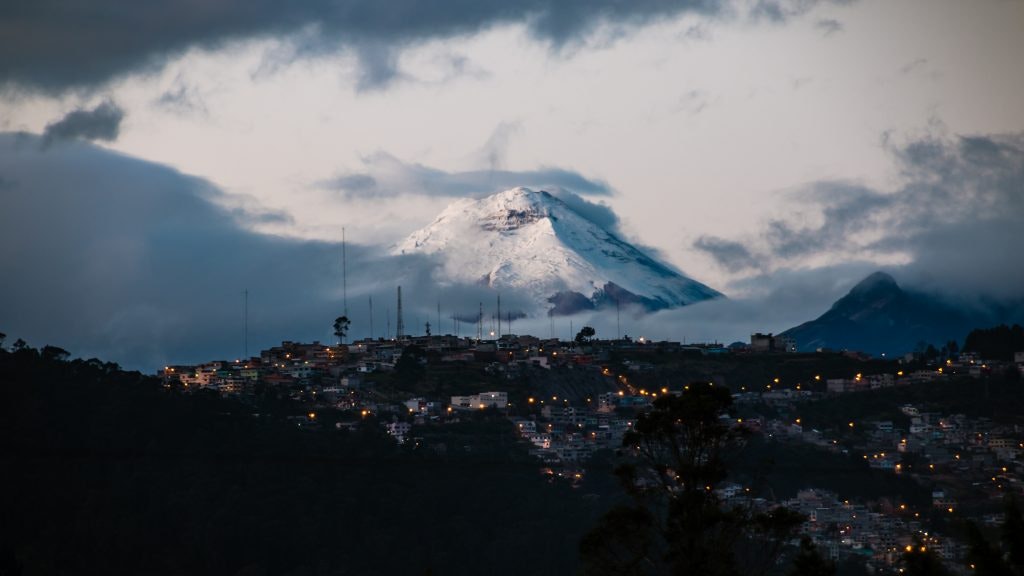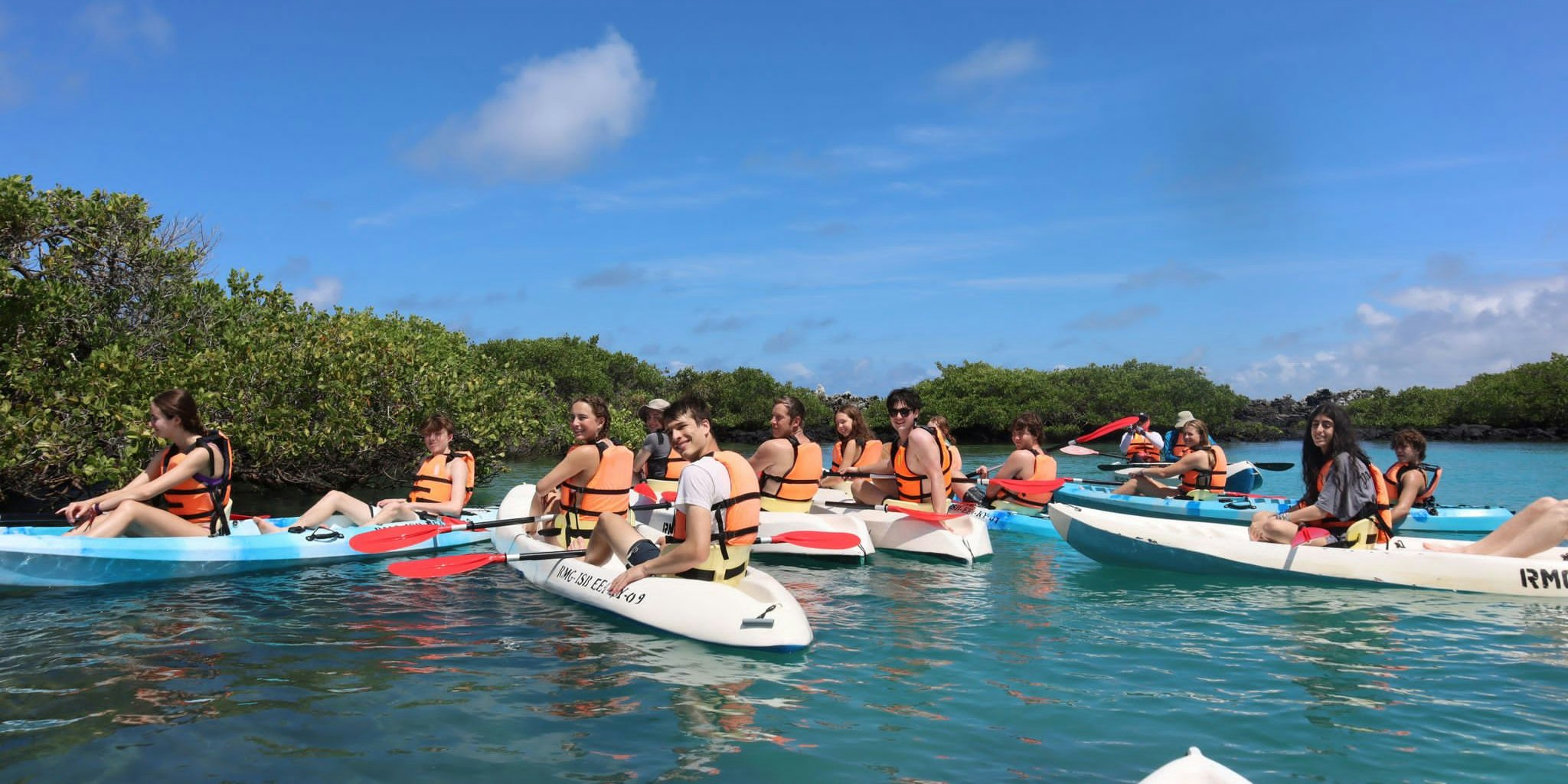A Past Adventure in the Wild Galápagos
Program Leader David Jackson shared a captivating story from a previous trip to the Galápagos Islands, where his favorite spot was underwater at Kicker Rock near San Cristóbal Island. Under the water at Kicker Rock there are reams of sea animals that are friendly, curious and relatively unaccustomed to humans. The opportunity to see marine life in this environment has made this deep water location one of the best snorkeling spots on the planet.
![]()
The water near Kicker Rock is one of the most popular snorkeling sites in the world. Photo: David Stanley from Nanaimo, Canada
“It’s incredible to snorkel side by side with marine turtles that don’t have a care in the world. You get close enough to these prehistoric animals to see barnacles on their shells. It feels like you’ve gone back two hundred million years in time. It’s so majestic. It gives you a Finding Nemo vibe,” Jackson said.
In addition to the turtles, there are also playful sea lions that pirouette in the water beneath snorkelers, colorful angelfish that swim in schools, and hammerhead sharks that harmlessly swim below in deeper waters. Jackson says snorkeling in this area is an experience he wishes everyone had.
This program gives them the chance to see animals that they can’t see anywhere else on the planet.

Marine iguanas hang out on a beach on Santa Cruz Island. Photo: Diego Delso, Delso Photos, License CC-BY-SA
Jackson will be leading the way both as an expert on educational travel and as a wildlife biologist. He has lived in Ecuador for about 19 years and leads the Andean Bear Foundation and the Wild Mountain Tapir Research Program, which aim to protect these animals. He also has been to the Galápagos Islands a number of times leading programs for students, including those in veterinary programs.
He uses his knowledge to teach students about animal welfare and biodiversity, while also helping students overcome any challenges they have during the journey.
“We had one kid who refused to snorkel because he was afraid,” Jackson said. “I had a one-to-one private chat, and all of the sudden he tried it. By the end of the program, he was going home in tears and thanking us for the experience.”
Seeing Another World That’s Teeming with Life
That unique snorkeling experience isn’t the only highlight with a destination as interesting as the Galápagos Islands. The students will visit several of the islands, including three major ones – San Cristóbal, Santa Cruz and Isabela Island.
The archipelago has 13 major islands total, along with a few smaller islands. Isabela is the largest. On this island, students will visit the Sierra Negra Volcano, which has the second largest volcanic crater in the world measuring six miles in diameter.
Jackson says this is one of the more strenuous days since the students spend about five to six hours hiking to see the rocky volcanic terrain. If they are lucky, the weather will be nice so they can enjoy fantastic views of the volcano and its surroundings. Even if it’s cloudy though, the students are sure to encounter many reptiles and birds that live in the area.
The islands were formed from volcanic eruptions and the wildlife that made it to the region by wave or wind are models for evolution because of the isolated nature of the archipelago. The animals could not travel elsewhere if survival became difficult, so they instead evolved to adapt to their environment. This, of course, caught the attention of Charles Darwin, who introduced the Theory of Evolution, along with other biologists from around the world.

A Galapagos sea lion enjoys the beach on San Cristobal Island. Photo: Diego Delso, Delso Photos, License CC-BY-SA
The islands have about 2,900 known species of fish, invertebrates, and marine mammals, including nearly 60 that are considered threatened species. Within these species there are many subspecies that have adapted to the islands. Jackson says the finches are an example of this.
“The 14 finch subspecies that live on the islands all have the same bodies but different bills,” Jackson said. “One finch has a crossed-over bill to get inside logs and branches to eat grubs and insects. A vampire finch has a scalpel-like bill to pierce flesh and drink the blood of larger birds and iguanas. Each subspecies has a different bill because of evolution.”
Students will see examples of this as they visit a tortoise breeding center and travel around the islands by kayak, on other boats, and on foot. They can witness how the land animals differ in their behavior since they have few natural predators.
Students can keep their eyes out for Galápagos penguins, which are the only penguins that live this far north, along with the blue-footed boobies, flamingos and the world’s only marine iguanas.
These animals and others have faced threats from invasive species that were introduced in the islands, including domestic animals like dogs and pigs. However, the local government has strengthened policies to avoid human-created damage to the ecosystem. This is keeping the islands pristine, making them a perfect spot for scientists and nature lovers.
During their time on the islands, the students will have plenty of time for snorkeling, hiking, boating, and soaking up the beach while enjoying views of nature and local wildlife.
Exploring the Mainland
The islands aren’t the only place where students will take in all Ecuador has to offer. They will begin and end their journey in the capital city of Quito, which is a UNESCO World Heritage site. The capital sits high in the foothills of the Andean mountains and was built on the ruins of an Inca city.

Mt. Chimborazo can be viewed in the distance from Quito, Ecuador.
It has some well-preserved colonial treasures and buildings with interesting architecture. Students will be able to see the city from the church towers and the famous Panecillo Hill, which provides excellent views of the city.
After touring the capital, the students will head north to the Yunguilla community, where they will do two days of service. This mountain village is known for its jam and cheese making. While there, students may work on reforestation efforts, learn to milk a cow, or try various gardening projects.
Such hands-on experiences and cultural insights give students plenty to reflect on as they gather for the Rustic Ties discussion on the final evening.
When Jackson talks about the program, it’s clear that students will have much to share when they return home. There is one word Jackson uses repeatedly when describing the trip, which really sums it up — and that word is “incredible.”




